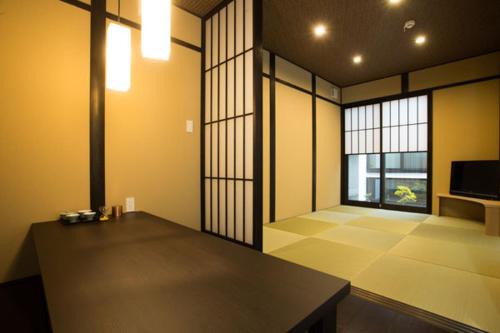Manpuku-ji Temple
menuMenu
Manpuku-ji Temple boasts magnificent temple buildings incorporating the architectural style of China's Ming Dynasty, along with numerous precious cultural assets.








Highlights
- Ming Dynasty-style Temple Architecture
- National Treasure Butsuden & Hattō
- Important Cultural Property Sanmon
- Paintings and Calligraphy of Ingen Ryuki
- Tea Utensils
Basic Information
- Address
- 34 Gokesho Sanbangawari, Uji City, Kyoto Prefecture Search for tourist attractions in Kyoto
- Access
- 15-minute walk from Uji Station on the Keihan Uji Line. 20-minute walk from Uji Station on the Kintetsu Kyoto Line. Show route
- Op.Hours
- 9:00 AM to 4:30 PM
- Cld.Days
- None
- Fee
- Adults: ¥700, High school students: ¥500, Junior high school students: ¥400, Elementary school students: ¥300
- INFO
- Smoking is prohibited within the grounds. Please refrain from bringing pets. Photography is permitted, however, please refrain from using tripods or flash photography.
Overview
Recommended nearby attractions
Hōkyō-ji Temple

Visit a temple with ties to Ashikaga Yoshimitsu, including a National Treasure writing room, tea room, and beautiful gardens.
Daifuku-koji Temple

Explore a historic temple, including its main hall and multi-storied pagoda, both designated as Important Cultural Properties.
Sanzen-in Temple

A Kyoto icon, this temple offers a tranquil escape, featuring the beautiful moss-covered Yujoen garden and the charming sight of the Warabedizo statues.
Daiho-onji Temple

The main hall, the oldest existing structure in Kyoto, built in the Kamakura period, is a designated National Treasure and a truly impressive sight.
Daitoku-ji Temple

With its sprawling grounds dotted with sub-temples, serene karesansui (dry landscape) gardens, and historically and culturally significant structures, Daitoku-ji is a must-see Zen temple representing the best of Kyoto.
Shōkoku-ji Temple

A historic temple established by Ashikaga Yoshimitsu. Don't miss the "crying dragon" painted on the ceiling of the Hōdō!
Kennin-ji Temple

Full of highlights, including the national treasure "Wind God and Thunder God" folding screens and the ceiling painting of the two dragons! Don't miss the serene garden where you can feel the spirit of Zen.
Tojiin Temple

The national treasure Butsuden (main hall) is a breathtaking example of Karayo architectural style, its beauty captivating all who visit.
Rokuhara Mittsu-ji Temple

A historic temple with a deep-rooted history, enshrining an Eleven-faced Kannon statue, which Kuya, a Buddhist priest, used to save people during a widespread epidemic in Kyoto.
Ninna-ji Temple

An ancient temple with vast palace gardens, registered as a World Heritage site. In spring, the late-blooming Omuro cherry blossoms burst into bloom, and in autumn, the grounds are ablaze with fiery red leaves.
Nearby Hotels
Komorebinoyie

Uji-Ichibanyado-Nigauri

Tabibitoyado Kirinya Hostel in Uji

Uji Tea Inn

Aiso

Hotel Trend JR Uji Ekimae

Kyoto Uji Hanayashiki Ukifune-en

Kyoto Uji Cha-gan-ju-tei House

Leeki Studio-Tatami,5ppl,JR5min

Leeki Studio-Twin Bedroom, JR 5min

